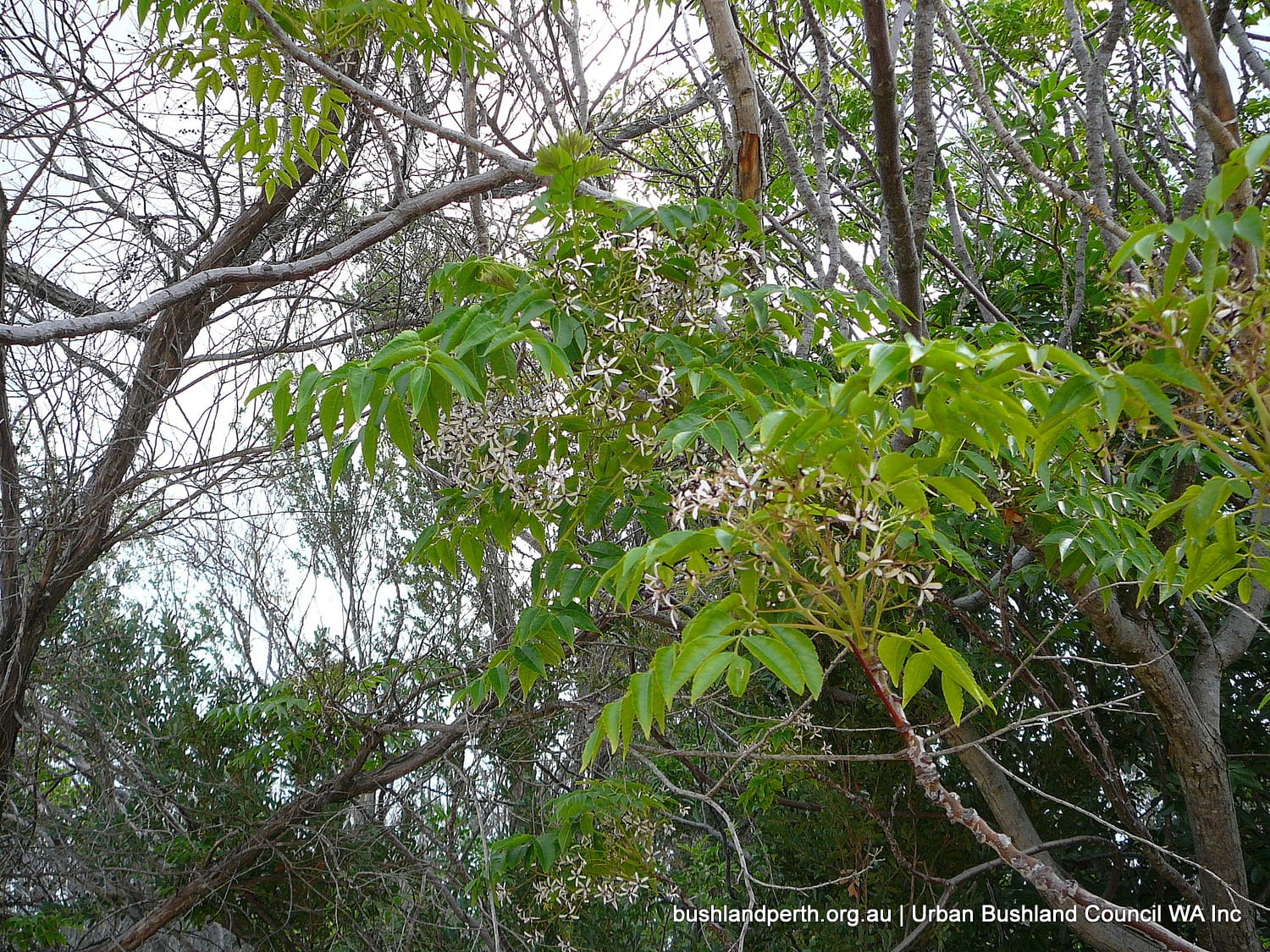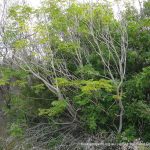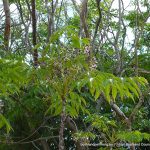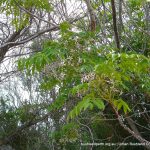Cape Lilac or White Cedar

Common name
Cape Lilac or White Cedar
Scientific Name
Melia azedarach
Type of plant
Tree And Shrub Weeds
About this weed
This common tree of gardens and road verges is actually a native of the Kimberley area of Western Australia but has become naturalised in the Perth area. It produces sprays of white to pink lilac flowers in the spring and masses of hard yellow berries in the summertime.
Description
Cape Lilac is one of the few deciduous trees native to Western Australia and Iran. It grows to between 2-15 m high. In spring it produced masses of white,pink or purple flowers followed by hard yellow berries in summer. Reproduction is by seed or suckers. Time to first flowering is 3 years from seed and 2 years from suckers. Poisoning is said to occur if 6-9 fruits, 30-40 seeds or 400g of the bark is consumed. The seedbank persists for several years and if burnt the tree suckers prolifically.
Impact on Bushland
Care should be taken as suckers will be prolifically produced following any disturbance. However, these tree also provide the Black Cockatoos with summer food – they can often be seen sitting quietly in Cape Lilacs eating the berries.
Location
Originally from the Kimberley Region it has now naturalised in the Perth Region. Its preferred areas withe sandstone or limestone. They are found on floodplains, ridges and gorges.
Priority for removal
Low: causes minimal disruption to ecological processes or loss of biodiversity.
Management (hand)
Hand pull seedlings, ensuring removal of all root material. Care should be taken as suckers will be prolifically produced following any disturbance.
Management (herbicide)
Stem inject older plants using 50% Glyphosate, or basal bark with 250 ml Access® in 15 L of diesel to base 50 cm of trunk. Avoid root disturbance until trees are confirmed dead. Read the manufacturers’ labels and material safety data sheets before using herbicides. Optimal treatment should be sprayed in December, January and February. Occasional spraying can be done in November and March.
Flowering month/s
September, October, November
Flower colour/s
Pink, Purple, White
Information source
https://florabase.dpaw.wa.gov.au/browse/profile/4516
Additional information
https://florabase.dpaw.wa.gov.au/weeds/swanweeds/
Hussey, B.M.J., Keighery, G.J., Dodd, J., Lloyd, S.G. and Cousens, R.D. (2007) Western weeds. A guide to the weeds of Western Australia, Second Edition, The Weeds Society of Western Australia, Victoria Park, Western Australia.



